|
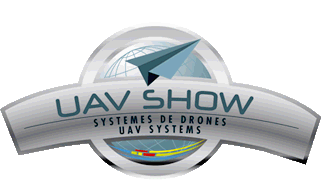
The global budget for
UAVs is expected to rise from $5.7 to about $11.4
billion by 2022, according to the Teal Group.
The European Commission has identified more than 400 civilian UAV projects in 20 countries, from solutions weighing a few grams to aircraft about the size of an Airbus A320.
In France, the DGAC published Europe’s first flight rules for civilian UAVs in 2012. In 2013, 220 operators have been accredited: the UAV business is growing fast and the European market is one of the largest there is!
The
opportunities for UAV's are endless for commercial unmanned aircraft. Popularization
may one day lead to civilian flights, but for now think agriculture,
prospecting, surveying, firefighting, environmental and conservation
data acquisition and that old favourite; border security. Other uses
include filmmaking, search and rescue operations, inspecting power lines and
pipelines and delivering medical supplies to remote or otherwise inaccessible
regions,
UAV's
have also been used by animal-rights advocates to determine if illegal hunting is taking
place (law enforcement). UAVs are nowadays routinely used in several applications where human interaction is difficult or
dangerous, such as forest fire
detection and search/rescue missions.
VENUE
UAV SHOW
Air Base 106, BORDEAUX-MERIGNAC AEROPARC
227 Avenue de l'Argonne
33700 Mérignac
Access via the Beutre entrance. Professionals only admitted
on presentation of your access badge and valid ID.
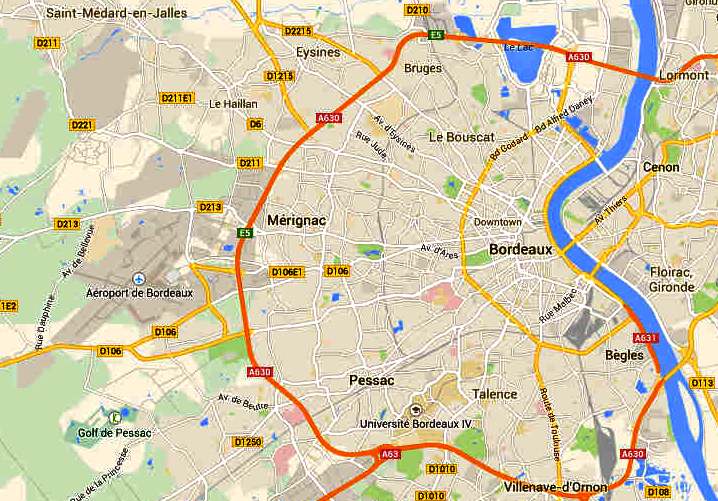
CONTACTS
Jean-Christophe DRAI
SALES MANAGER, DEMONSTRATIONS
T. +33 (0)6 66 78 93 58
E.
jcdrai@koliane.com
Romain BESSARD
SALES DELEGATE
T. +33 (0)6 64 01 10 92
E.
rbessard@koliane.com
Organisation and Communication / TERRITOIRES & Co
Sandra PERNET
T. +33 (0)5 56 00 89 50
E.
spernet@territoires-co.com
Aurélie BRUGERE
T. +33 (0)5 56 00 89 50
E.
abrugere@territoires-co.com
Séverine
LOYER
T. +33 (0)5 56 00 89 50
E.
sloyer@territoires-co.com
Coordination - p/o CONGRES ET EXPOSITIONS DE BORDEAUX
Frédéric ESPUGNE DARSES
T. +33 (0)5 56 11 99 00
E.
f.espugne@adsshow.eu
Press Contact
Claire IGLESIAS-VALDES, Territoires & Co
T. 05 56 00 89 50
E.
ciglesias@territoires-co.com
UAV SHOW - p/o CONGRES ET EXPOSITIONS DE BORDEAUX
RUE JEAN SAMAZEUILH - BP 55 - 33030 BORDEAUX CEDEX
Tél : +33 (0)5 56 11 99 00
+33 (0)5 56 11 88 81
HOW TO GET TO BORDEAUX
By plane : Bordeaux Mérignac (BOD)
By train : Gare Bordeaux St Jean
Motorway : From Paris via A10 motorway, from Toulouse via A62 motorway, leave the Bordeaux ring-road at junction 11B to Mérignac Aéroport/Mérignac Chemin Long (towards the Airport), take Avenue René Cassin (D106e1), turn left onto Avenue Roland Garros, turn right at the D106 onto Avenue de l’Argonne (towards Saint Jean d’Illac / drive through Beutre)
Tram : Line A to Mérignac centre, “Lycées de Mérignac” stop, then take bus no.70
Bus : Line 30 towards Cimetière Intercommunal, “Tournesol” stop
GPS coordinates : 44° 49’ 15‘’ Nord - 0° 42‘ 36’’ Ouest
FINANCIAL
SUPPORTERS





OFFICIAL
PARTNERS





UAVs
IN THE NEWS
JULY
2014 -
FOX NEWS
The Federal Aviation Administration is “significantly behind schedule” in its
attempt to meet Congress’ September 2015 deadline for integrating commercial
drones into U.S. airspace, according to an audit report.
The report by the Department of Transportation’s Inspector General warns that
the FAA will miss the deadline for adding drones, also known as Unmanned
Aircraft Systems (UAS) to America’s National Airspace System (NAS).
“FAA’s delays are due to unresolved technological, regulatory, and privacy
issues, which will prevent FAA from meeting Congress’ September 30, 2015,
deadline for achieving safe UAS integration,” the report said. “As a result,
while it is certain that FAA will accommodate UAS operations at limited locations, it is uncertain when and if full integration of UAS into the NAS will
occur.”
The report said that the FAA has not reached consensus on technology standards
to help drones detect and avoid other aircraft and maintain data links with
ground stations. Auditors also found that the Administration has not set up a
regulatory framework for drone integration and is not effectively collecting and
analyzing drone safety data. The absence of procedures for sharing drone safety
data with the Department of Defense, the largest user of drones, was also
highlighted.
A law passed in 2012 aims to significantly increase commercial and law enforcement use of drones over the coming years. Questions, however, are being
asked about the safety of the technology. A recent Washington Post investigation
revealed that more than 400 large U.S. military drones have crashed in accidents
around the world since 2001.
Last month, the National Park Service prohibited drones, citing noise and
nuisance complaints, visitor safety concerns and an incident in which park
wildlife were harassed.
The FAA appears to have its work cut out bringing this divisive technology to
America’s skies. “The FAA agrees with the DOT IG’s recommendations and will carefully consider
them as the agency continues to move forward with UAS integration,” wrote an FAA
spokesman, in an email to FoxNews.com.
The spokesman acknowledged the challenges of safely integrating drones into U.S.
airspace, but said that the agency has made significant progress towards that
goal. The FAA, he wrote, has helped ensure four of six UAS test sites are
operational and has published a UAS roadmap that addresses current and future
policies, regulations, technologies and procedures. The agency has also issued a
Comprehensive Plan encompassing partner needs, and simplified the process that
authorizes UAS flights.
He also pointed to a rule issued for model aircraft, a plan to expand drone use
in the Arctic, and the FAA’s authorization of two commercial flights in the
polar region. The agency is on track to issue a proposed rule for small UAS this
year, he added.
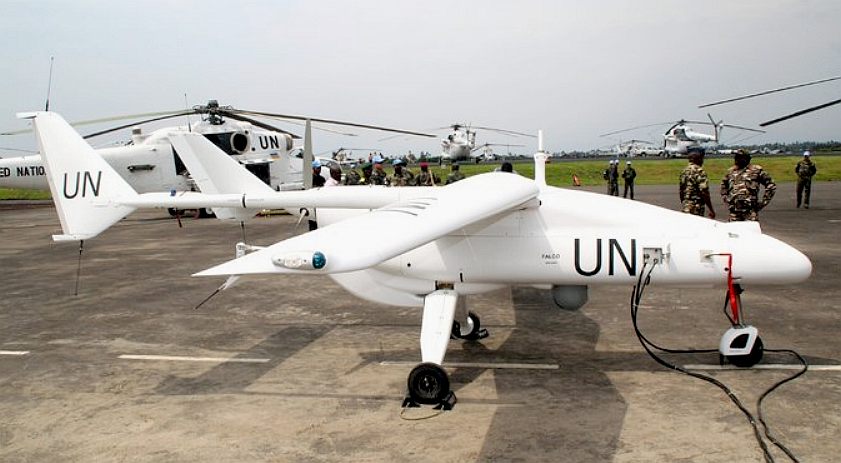
JULY
3 2014 - PEACEKEEPING MISSION AFRICA- sUAS NEWS
GOMA, Democratic Republic of Congo — The call came after 8 in the evening, from peacekeepers posted in a remote corner of the country’s restive east. The troops sensed suspicious movement nearby. Venturing out into the forest at that hour was far too risky. Would ground control send a drone to have a look?
From here, a remotely piloted aircraft set off, its owl eyes designed to peer through the darkness and send back a live picture of what was happening on the ground. In a windowless trailer at the airport here in Goma, pilots steered it past a row of volcanoes toward the jungle.
In an age of ubiquitous surveillance, even rebels in the bush can expect to be tracked, as United Nations troops cautiously deploy a tool familiar to most modern militaries around the world: the drone.
The United Nations insists on calling the aircraft unarmed, unmanned aerial vehicles, the term drone having acquired a bad reputation because of the armed versions that American forces use against targets in Pakistan and elsewhere. United Nations officials insist that they do not plan to use drones to kill anyone, only to get a picture of trouble and grief on the ground, to protect civilians and their own troops.
“We have a mandate here to neutralize armed groups — you can’t do it without intelligence,” said Martin Kobler, who leads the United Nations Mission in the Democratic Republic of Congo.
“They have also a psychological effect,” he added. “Everyone knows they are flying.”
More and more, drones are flying over some of the toughest peacekeeping missions in the world, improving the United Nations’ intelligence-gathering capability, but also raising new issues about what to do with so much important data.
Dutch troops are using drones to gather intelligence on the armed Islamist insurgents operating in the deserts of Mali. Swedish troops are expected to take some drones along when they are sent to Timbuktu, Mali, this year.
The United Nations has received a nod from the government of Mali to use drones more broadly in its peacekeeping mission there. Likewise from the government of the Central African Republic. The United Nations has been rebuffed in its efforts to put them to use in South Sudan, where the government, facing a civil war, has flatly denied permission.
Never before have foreign troops been able to collect so much fine-grained information about people and places of interest: who sells guns to whom, where illegal gold mines operate, the precise location of a rebel base. All of it, United Nations officials say, is classified and available only at the discretion of its lawyers.
It remains to be tested whether and how the information will be shared with, for instance, a host government, or a sanctions committee impaneled by the United Nations Security Council, or even a war crimes tribunal.
On the Security Council, which authorizes peacekeeping missions, Russia and China favor proceeding slowly as an expert panel studies the drones’ legal implications, while the United States and Britain have cited their usefulness. Human Rights Watch called for greater transparency and requested that any information picked up by peacekeepers about atrocities against civilians — the burning of villages, for instance — be shared with the United Nations’ human rights monitors.
Congo is the first testing ground for drones in peacekeeping. The experience here offers a glimpse into both the allure and the limitations of the new technology, in what is one of the most stubborn conflicts facing the United Nations. Its peacekeepers are charged with routing the various rebel groups that have spent 20 years killing and raping people, as well as plundering the country’s rich mineral resources, often with the help of the armies of neighboring countries.
Here in Goma, United Nations officials say that remotely piloted aircraft can be more useful than helicopters for surveillance because drones can fly low without being easily seen or heard, and they can remain over an area gathering information for hours at a time. A helicopter crew that tried to do the same would risk being shot down.
“With U.A.V.s, you do it quietly, discreetly, you do it in the middle of the night,” said a United Nations military officer who is part of the drones team, referring to unarmed, unmanned aerial vehicles, the other name for unarmed drones.
The limits, though, are already obvious. The five drones the United Nations has for this mission, leased from an Italian company called Selex, have a flying range of about 125 miles, about 200 kilometers, from the ground control station here in Goma, so they can reach only a small part of even the most active conflict zone in a very large country. Discussions are underway to establish a second control station north of here, closer to an active operation against a rebel group near the Ugandan border, said Mr. Kobler, leader of the United Nations Mission in Congo.
The drones also face a tough opponent in Mother Nature. When the World Food Program wanted the drones to check whether a certain road was passable for aid convoys, the jungle canopy there proved to be so thick that the drones’ cameras could not get a good enough picture of the road from above.
Even the peacekeepers who sensed the suspicious movement around their post in the forest north of here did not ultimately get much help. A fierce thunderstorm occurred shortly after takeoff, and the pilots steered the drone back to Goma before it could be battered.
Selex, which is part of Finmeccanica, a giant Italian aerospace and industrial conglomerate, supplies the United Nations with private contractors to fly the drones, operate their cameras and help analyze the pictures they take. The Congo peacekeeping mission expects to spend up to $15 million a year on the drones, officials said, noting that it is a tiny portion of the mission’s $1.46 billion annual budget.
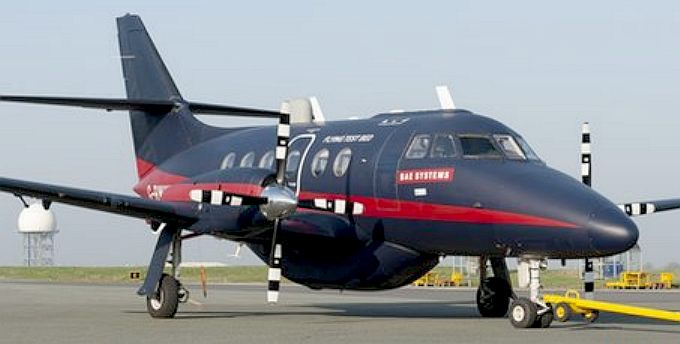
BBC
NEWS MAY 2013
A Jetstream aircraft became the first to fly "unmanned" across UK shared airspace last month.
An on-board pilot handled the take-off, from Warton, near Preston in Lancashire, and landing, in Inverness.
But during the 500-mile journey, the specially adapted plane was controlled by a pilot on the ground, instructed by the National Air Traffic Services.
There were no passengers, but the 16-seater aircraft flew in airspace shared with passenger carriers.
Known as "the Flying Testbed", it contains on-board sensors and robotics to identify and avoid hazards.
National Air Traffic Services unmanned air vehicle (UAV) expert Andrew Chapman said: "Nats ensured that this test flight was held without any impact on the
safety of other users of airspace at the time.
REGULATORY FRAMEWORK
"Although there is still work to be done it would seem that, on the basis of the success of this flight, a UAV could operate in different classes of airspace."
It is the latest in a series of test flights carried out by Astraea (Autonomous Systems Technology Related Airborne Evaluation and Assessment), which has received £62m funding, from commercial companies and the UK government, to research how civilian unmanned aircraft could fit in to shared airspace.
A representative of BAE Systems, one of the companies to have invested in Astraea, said: "The flights were part of a series of tests helping flight regulators and Nats to understand how these flights work, and what they need to do were they to go ahead and put a regulatory framework in place for the unmanned flights in manned airspace.
"It's still very early days in terms of that regulation taking place."
Business and Energy Minister Michael Fallon described the latest flight as "pioneering".
SOCIAL IMPACT
"Astraea has made significant achievements, placing the UK industry in a good position globally on unmanned aircraft and the development of regulations for their civil use," he said.
The project has the support of the Civil Aviation Authority (CAA).
At a media conference last year, Astraea project director Lambert Dopping-Hepenstal said getting unmanned aircraft (UA) into shared airspace was more than a technical challenge.
"It's not just the technology, we're trying to think about the social impact of this and the ethical and legal things associated with it," he said.
"You've got to solve all this lot if you're going to make it happen, enable it to happen affordably."

NOVEMBER
2011 - IEEE
SPECTRUM - When Will We Have Unmanned Commercial Airliners?
Unmanned planes dominate the battlefield, yet airliners still have pilots—and copilots
Time was when a uniformed man would close a metal gate, throw a switch, and intone, "Second floor—men's clothing, linens, power tools…" and the carload of people would glide upward. Now each passenger handles the job with a punch of a button and not a hint of white-knuckled hesitation. The first automatic elevator was installed by Otis Elevator Co. in 1924; the things became common in the 1950s.
And back in the day, every train had an "engineer" in the cab of the locomotive. Then robo-trains took over intra-airport service, and in the past decade they have appeared on subway lines in Copenhagen, Detroit, Tokyo, and other cities.
Quietly, automation has taken charge of many other life-and-death functions. It manages white-hot ribbons of steel that shoot through rolling mills. It guides lasers that sculpt the eye and scalpels that excise the prostate gland. It runs oceangoing freighters, the crews of which have shrunk by an order of magnitude in living memory. And, most obviously, it is mastering aerial warfare. Today, the U.S. military trains twice as many ground operators for its unmanned aerial vehicles (UAVs) as pilots for its military jets. Its UAVs started off by flying surveillance missions, then took on ground attack; now they are being readied to move cargo and evacuate wounded soldiers.
In the sphere of commercial flight, too, automation has thinned the cockpit crew from five to just the pilot and copilot, whose jobs it has greatly simplified. Do we even need those two? Many aviation experts think not. "A pilotless airliner is going to come; it's just a question of when," said James Albaugh, the president and CEO of Boeing Commercial Airlines, in a talk he gave in August at the AIAA Modeling and Simulation Technologies Conference, in Portland, Ore. "You'll see it in freighters first, over water probably, landing very close to the shore."
Later, when air-traffic control systems rise to the challenge, pilotless planes will carry stuff to your very doorstep. In the fullness of time, they'll carry you.
Still, UAVs have yet to find a place in even the humblest parts of the aviation business—surveying traffic jams, say, or snooping on celebrity weddings. Such work has not yet been approved for routine purposes, even when the aircraft is small and controlled by a human on the ground—a man-machine meld that keeps a pilot in the loop. Why is it taking so long for the pilot to go the way of the elevator man?
First is the problem of "sense and avoid"—the requirement that every airplane be able to spot other aircraft and obstacles and get out of their way. It's a hard job for a machine. "Regulators always require that the pilot be able to look out the window and see if he's about to have a collision," says Rick Prosek, manager of the U.S. Federal Aviation Administration's (FAA) unmanned aircraft program office, which handles the regulations governing where in the civilian airspace UAVs may fly. "There are times when the technology doesn't give you the right answer," he says, and a human should be there "to say, 'Hey, I need to intervene.' "
Even UAVs that are remotely piloted need some sense-and-avoid capability, because there isn't enough bandwidth for sending lag-free, high-definition video to ground-based operators. Compare that with military UAVs, which have a network latency of less than half a second, because they link to their ground controllers half a world away via an owned-and-operated satellite system supplemented by other channels, such as undersea cables.
To go beyond remote control to truly autonomous flight, you'd need onboard software to interpret the data from the aircraft's cameras, radars, and other sensors and then to make good decisions. Autonomous planes would also need to play nicely with piloted planes, keeping their distance in the air, hewing to air-traffic controllers' directives, and avoiding fender-benders on the ground.
Here again the military has lessons for the civilian sector. Northrop Grumman has built some sense-and-avoid savvy into the unmanned helicopters and other UAVs it's developing for the U.S. Navy. The automation does, in three dimensions, pretty much what radar-enabled crash-avoidance systems now do in a few models of luxury cars (see IEEE Spectrum, "A Driver's Sixth Sense," October 2011), and like those systems, it keeps a human being in the loop. The company's upcoming X-47B, a fighter-size unmanned combat air system (UCAS), will take autonomous flight one step further. The test will involve taking off from an aircraft carrier, using GPS to fly a predetermined route, and landing on the carrier under light supervision—a minder, somewhere onboard the ship, who stands ready to take control if necessary.
But that's not quite the same thing as flying in crowded airspace, where even a 1 percent error rate would be intolerably high. Even a tiny civilian UAV will need some sort of sense-and-avoid capability before regulators will let it share the air with people movers. In this case, at least, the danger is small enough and the potential payoff great enough that agencies like the FAA seem ready to allow such small UAVs to fly within carefully delineated spaces. "In 2013 we anticipate we'll publish a final rule that would allow small UAVs to fly in certain parts of the national air space," says the FAA's Prosek. "Then we could benefit from the data they'd collect for us."
Having negotiated a sense-and-avoid situation, a pilotless plane would also need enough brains to maneuver away from an uncomfortably close vehicle, notify air-traffic control of what was happening, and then land safely. These challenges, however, are more like flying by the book than by the seat of your pants, and flying by the book is what computers do best.
Take the Global Hawk, a UAV developed by Northrop Grumman for maritime surveillance operations. It's able to fly itself home and land on its own if it loses its satellite link with its ground station. "The plane 'pings' the ground station to maintain communications, called a heartbeat," Cummings explains. "If the heartbeat's lost, the aircraft 'knows' and goes to self-repair mode, trying a second radio, checking circuit breakers, and so on. Then, if nothing works, the aircraft goes to its known profile, follows waypoints, and lands itself with GPS and radar."
Such planes weren't designed to have the parts-per-million defect rate that you'd expect in a passenger plane. (Indeed, the Global Hawk still hasn't fully met the Pentagon's specs, which require that a tag team of several planes provide "near-continuous" surveillance over a particular place for up to 30 days.) But even the Global Hawk's level of autonomy would surely be welcome in an airliner as a last-ditch way of saving it if the pilot and copilot were killed or incapacitated.
THE MIND BOGGLES
As significant as the technical hurdles are, however, by far the biggest impediment to pilotless flight lies in the mind. People who otherwise retain a friendly outlook toward futuristic technologies are quick to declare that they'd never board a plane run by software, which they know as the kludgy mess that makes their laptops freeze. But minds can be changed.
Each semester, Cummings asks her students at MIT whether they'd fly in a pilotless plane from Boston to Los Angeles. Two or three hands go up. Then she asks them how they'd feel if the fare was just 50 bucks. More than half the hands go up. Cummings's little experiment suggests that people's reservations about robo-flight aren't set in stone.
One factor that's often cited for keeping a pilot in charge is what's known as "shared fate." That's the reassurance passengers get from knowing that the human in the cockpit wants to live just as much as they do. But shared fate is not the only way, or even the normal way, to ensure safe service. After all, restaurants don't employ food tasters to reassure diners, nor do losing defense lawyers join their clients in jail. It's usually enough for a professional to demonstrate sheer competence—the "right stuff" of aviator lore. And it's clear that automatic pilots—like those that land F-18s—now have a goodly amount of it.
Even Captain Chesley "Sully" Sullenberger, the pilot who deftly ditched his Airbus 320 airliner in New York City's Hudson River after its jet engines swallowed some geese, owed much to his onboard software—among other things, it managed the plane's angle of descent so as to avoid a stall.
But trusting software to safely shepherd hundreds of passengers across thousands of kilometers? A suspicious public isn't likely to buy into that vision, because safety is one of those things you can't have enough of. And how could a machine ever be as safe as a man-machine combo?
Yet the counterargument is also worth considering: Could the very collaboration of man and machine be causing human skills to wither? The FAA seems to think so. In a draft report cited by the Associated Press in July, the agency stated that pilots sometimes "abdicate too much responsibility to automated systems." Automation encumbers pilots with too much help, and at some point the babysitter becomes the baby, hindering the software rather than helping it. This is the problem of "de-skilling," and it is an argument for either using humans alone, or machines alone, but not putting them together (see IEEE Spectrum, "Automated to Death," December 2009).
Consider the 2009 crash of Air France Flight 447 off the coast of Brazil. A report from the French investigators, released this summer, argued that the pilots hadn't been properly trained to handle a malfunction of the airspeed sensors system, the apparent proximate cause of the crash. Thanks to automation, which had taken over many of their routine tasks, some of their skills had atrophied. The report suggested that had the copilot (apparently the one in charge at the time) kept the plane level while trying to figure out what was going on with the airspeed, he could have mastered the situation. Instead, the copilot seems to have held the plane's nose up, causing the very stall he was trying to prevent. The French report [PDF] proposed that pilots get more experience in flying by the seat of their pants.
But it isn't easy for an airliner pilot to practice flying by the seat of his pants. Simulators hardly satisfy—isn't it the SimFlight world we're trying to get away from?—and even the occasional intervention in the plane's workings can't instill an intuitive feel for flying. And such interventions really are becoming occasional. Airliners—the Boeing 747, for instance—allow even landing to proceed hands free, says Davis, of New Mexico State. We are clearly in a particularly uneasy stage of the man-machine meld.
PUBLIC PERCEPTION
To win over the public, the autopilots of tomorrow will have to start today by exploiting niches where civilian pilots can't or won't work—just as was the case in the military. With time, the systems will improve and eventually fan out to conquer additional segments of the broader market.
Look for the following order of events. Today, small government-run UAVs are plying ocean routes, looking for pirates and lost sailors; next, companies will send the craft into the back country, along routes cleared for their passage by civilian regulators, to check on the state of pipelines and power lines. After that, UAVs will ferry valuable medical samples and packages. A doctor might, for example, put a vial of blood into a UAV and send it to the nearest teaching hospital for analysis; a courier service such as FedEx might fly important packages from Japan to California, using dedicated airfields on each country's shoreline, thus avoiding civilian air traffic altogether. Once they're demonstrated on the battlefield, robotic medevacs will graduate to civilian duty, rescuing people stranded by flood or fire. Maybe then, after seeing such rescues on television, the flying public will finally start to warm to the cold machine.
"We often talk about the 'save little Johnny' scenario, where no human-operated aircraft wants to go out in a terrible storm, so you send out robotic aircraft to save little Johnny, alone in the ocean," said Rodney Walker, in an interview conducted last summer. Regrettably, Walker, a professor of electrical and electronic engineering and of aerospace engineering at the Queensland University of Technology, in Brisbane, Australia, died as this article was being prepared for publication.
Walker's team, however, continues to work on his more immediately useful project—to use pilotless planes to survey power lines and find early signs of encroaching brush that might take the lines down in a storm. (It was apparently a wayward branch in Ohio that triggered the 2003 blackout in North America.) The idea is perfect for the empty parts of Queensland, a province with nearly three times the space and just a fifth of the population of Texas.
"Our energy distributors are desperately looking for new ways to surveil power lines," Walker told IEEE Spectrum in June. "They're taking the automated system we developed, but as a flight-assist system, and putting it into piloted aircraft for two to three years to prove the guidance and the automation. The pilot is largely hands off, but his presence allows us to meet regulations." He added that it would probably take no more than a decade to dispense with the pilot and fly the plane, perhaps autonomously and "certainly by remote control." Even then, such UAVs wouldn't be able to save little Johnny, but you could send out scores of them to sweep the seas for the tyke and then call in a piloted plane to pull him from the water.
Such baby steps in automation will eventually collide with another trend in aviation: the decades-long "decrewing" of airliners. Back in the day, the standard cockpit contained a full cast of characters, including the flight engineer, the navigator, and the radio operator. Technology has replaced those functions, and those people, one after the other.
The copilot is next in line. "Instead of a two-person cockpit, we'll see one person only, and software would serve as a backup," says New Mexico State's Davis. "And it'll come only after a certain period of performance, when the insurance industry is willing to accept the risk."
Of course, money is the necessary fuel for any pilotless air business, and so far, nobody in the industry has spied a huge pile of it waiting to be made. The field still needs a killer application to motivate moneyed interests to lobby the government and win over the flying public.
"The FAA isn't jumping ahead of things, because there hasn't been an extreme business case for doing so," says Davis. "No killer biz application has stood up and said, 'Here I am.' "
Cutting pilots' and copilots' salaries won't save much money: They matter little when spread over a jumbo jet's worth of passengers. Perhaps more significant, though hardly overwhelming, are the indirect costs of having to schedule flights so that fresh, rested crew members are available. Here the savings would be greater because you'd be able to minimize an airliner's downtime.
However, any true killer app would probably dispense with the existing business model altogether and replace it with an entirely new model, one that might start in a small niche and grow to take over commercial aviation. That's how the PC made its way from a glorified word processor to a general-purpose tool for small businesses and, later, for medium-size corporations. At some point it began to eat at the bottom of the mainframe market, in classic "disruptive" fashion.
For robo-flight, the killer app could start off with local air service. In many places just getting to the airport or to the main airport hub is the hardest leg of the trip. If small robo-planes could get you there, air travel would become vastly more attractive.
"Look at five-seat airplanes," says David Vos, senior director of unmanned aircraft systems and control technologies for Rockwell Collins, in Cedar Rapids, Iowa. "You could make a business out of a [pilotless] taxi service from one small airport to another, and it'd be a whole new world."
Just when we might see that world is still the great question. Back in 2002, two illustrious technogeeks bet US $2000 on whether full-fledged pilotless airliners would fly routinely by 2030. And they placed the bet (on the website Longbets.org) before much of the huge progress in military UAVs had even been demonstrated.
Craig Mundie, chief research and strategy officer at Microsoft, thought such an outcome likely. He imagined "arriving at a methodology for system design that yields as much dependability, on an everyday basis, as the triple-redundant computer that flew guys to the moon." Eric Schmidt, now the executive chairman of Google, argued that "the FAA changes so slowly that if this were even all possible, the adoption and certification would all take at least 50 years."
That would be true, perhaps, if the United States were the only force in civilian aviation. But some other country, with lots of space and fewer people, may very well decide that commercial pilotless flight makes sense now. Australia, are you listening?
This article originally appeared in print as "When will software have the right stuff?".

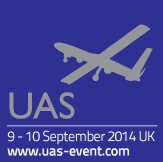

LINKS
UAV
Show Europe http://www.uavshow-europe.com/en/ Terrapinn
Commercial UAV Show 2014 http://www.terrapinn.com/exhibition/commercial-uav/index.stm China-building-army-unmanned-military-drones-rival-U-S http://www.dailymail.co.uk/news/article-2011533/China-building-army-unmanned-military-drones-rival-U-S.html BBC
news pilotless flight May 2013 BBC
news UAV flies over Irish sea Nov 2012 http://www.bbc.co.uk/news/science-environment-20327991 http://www.bbc.co.uk/news/technology-22511395 Transport
Risk Management http://www.transportrisk.com/uavrcfilm.html New
York Times
unarmed drones aid UN peacekeepers in Africa http://www.suasnews.com/2014/07/29939/unarmed-drones-aid-u-n-peacekeeping-missions-in-africa/
http://spectrum.ieee.org/tech-talk/aerospace/aviation/that-toy-is-now-a-drone-says-the-faa
http://www.foxnews.com/tech/2014/07/01/faa-will-miss-2015-drone-deadline-audit-warns/
http://spectrum.ieee.org/aerospace/aviation/when-will-we-have-unmanned-commercial-airliners/0
http://boingboing.net/2014/06/29/new-faa-rules-class-toy-uavs-a.html Arabian
Gazette commercial drone aircraft http://www.arabiangazette.com/ready-commercial-drone-aircraft-20130622/
DSEIi
UAS http://www.dsei.co.uk/
Totally
unmanned Olympia
commercial uav show
http://www.totallyunmanned.com/ http://www.olympia.co.uk/whatson/commercial-uav-show
http://www.wired.com/2013/11/drone-lasers/
http://en.wikipedia.org/wiki/Unmanned_aerial_system
http://www.uas-event.com/ http://www.uas-event.com/Content/Call-for-papers-now-open/6_11/
http://www.wired.com/wiredenterprise/2013/08/drone-autopilot/?mbid=social11284284
http://www.wired.com/design/2013/02/crazyflie-nano/

EHANG
184 QUADCOPTER
- This incredible machine carries a passenger a significant distance.
|











